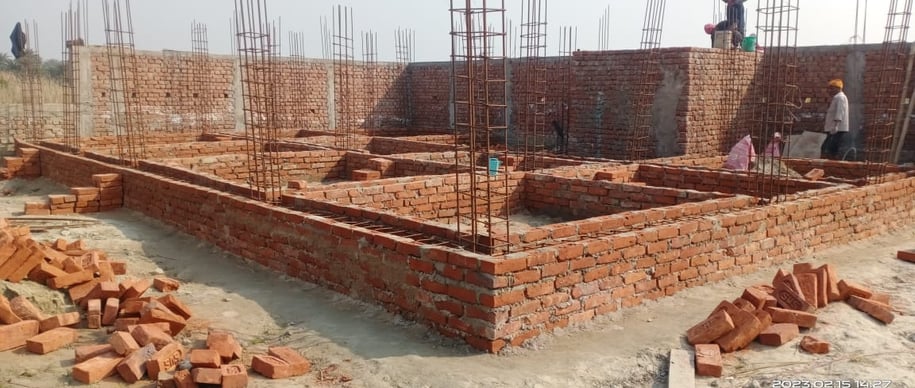Plinth beam construction
Blog post description.


Plinth beam work procedure
Mistakes committed at plinth beam work procedure cannot be rectified at a later stage. The brick work for the plinth beam is a crucial part of house construction. It provides a solid foundation and support for the entire structure. The quality of the brick work will determine the stability and durability of the building. It is essential to carefully plan and execute this stage of construction to ensure that the plinth beam is able to bear the load of the walls and floors above. Proper alignment, leveling, and use of high-quality materials are key factors in achieving a strong and reliable plinth beam. Attention to detail and precision in the brick work will contribute to the overall safety and longevity of the building. Therefore, it is important to entrust this task to skilled and experienced professionals to ensure the structural integrity of the house. (Pic is from our actual site.)
Points to remember:
The bottom of the peripheral plinth beam should be on kept 15cm below the existing ground level and necessary plinth masonry should be done above the beam.
Tie beams may be cast on masonry work at the plinth level. The only side shuttering and supports are required in this case.
No masonry should rest on bare soil, but it should rest either on P.C.C. done on well-compacted strata or on plinth/tie beam.
Above ground level, brick blockwork 23cm (9″) or 20cm (8″) in thickness can be done depending upon the size of the beam bottom.
An essential in a building is that the structure should be dry. A damped building is unhealthy for its residents. A damp proof course is required over the plinth wall because moisture rises up the wall from the adjacent ground, due to capillary action.


